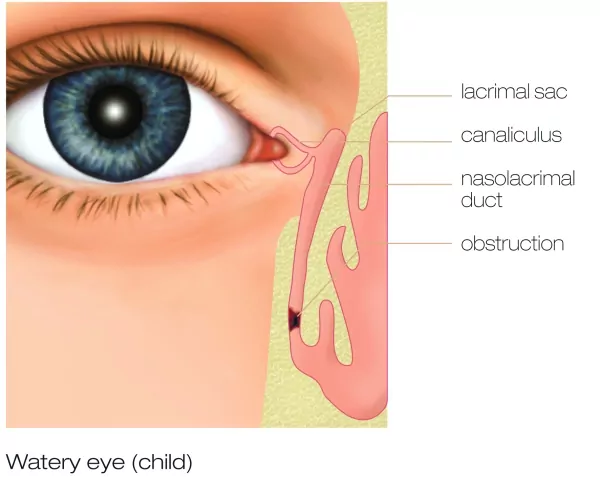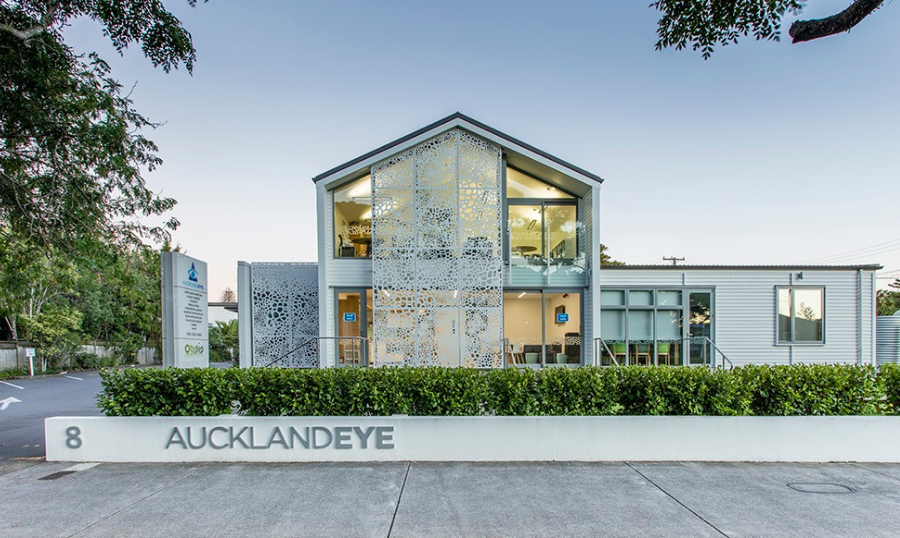What Is the Right Age for Laser Eye Surgery?
Understanding how age affects eligibility and the best option for you.

Tearing is a normal function of the eye, where the components of tears (water, oil and antibodies) help to keep the eye lubricated and healthy. Tears are essential for maintaining eye health and preventing damage to the front of the eye (cornea) from drying and becoming inflamed. However, excessive tearing in children is a common condition in which there is an overflow of tears often without a clear explanation. While we understand that any abnormality with your child’s health can be stressful as a parent, it is important to remember that watery eyes in an infant are common and almost always benign, with the most common cause being congenital nasolacrimal duct obstruction (CNLDO).
Congenital nasolacrimal duct obstruction (CNLDO) occurs due to a delay in the maturation of the nose and lacrimal system, which can cause excessive tearing in one or both of the child’s eyes. The insides of the child’s eyelid hold the drainage channels that connect to the tear ducts. In some cases, these passageways can get blocked and lead to watery eyes, which is called ‘epiphora’.

If the blockage is complete, this will often result in constant watering and frequent discharge, which can sometimes have a yellowish appearance. This discharge comes from bacteria proliferating in the stagnant tear pool within the nasolacrimal duct and tear sac. The discharge can sometimes spill back onto the eye and collects in the eyelashes.
If you child is presenting a yellow coloured discharge, it is important to remember that the child’s eye itself is not infected and is therefore not at risk of damage.
Treatment is largely supportive with warm moist washes to clear away any discharge and intermittent brief courses of topical antibiotics (usually chlorsig or fucithalmic) when it is particularly mucky. The parents should know that the antibiotics will not be curative because as long as the duct remains blocked the discharge will recur.
95% of congenital tear duct obstruction resolves spontaneously by 12 months so we advise deferring surgery until a child is over 1 year of age. Sometimes the obstruction is incomplete and the watering is intermittent and not too bothersome, in which case it is fine to wait indefinitely. However, the decision to proceed with surgery is the parents’ and is based on how much watering and discharge is present.
The surgery requires a brief general anaesthetic. The canaliculi are checked and then a probe is passed down the tear duct to break through any obstruction. Usually, there is just a fine membrane to break through but sometimes there is a tighter bony narrowing, in which case there is a higher likelihood of recurrence. Overall, the success rate of this procedure is 95%.
Watery eye in children is more common than you think and often gets better on its own. However, if the watering persists, the treatment required will ultimately depend on the cause, which is why it is recommended that you book a visit to see your child’s doctor or a pediatric ophthalmologist.
If you have a question or would like to book an appointment for your child’s watery eye, please contact our friendly specialist team on 0800 AKL EYES or email to admin@aucklandeye.co.nz

Understanding how age affects eligibility and the best option for you.

Auckland Eye offers expert eye care across eight convenient locations, making specialist treatment accessible wherever you are in New Zealand.

What to expect and how to heal smoothly